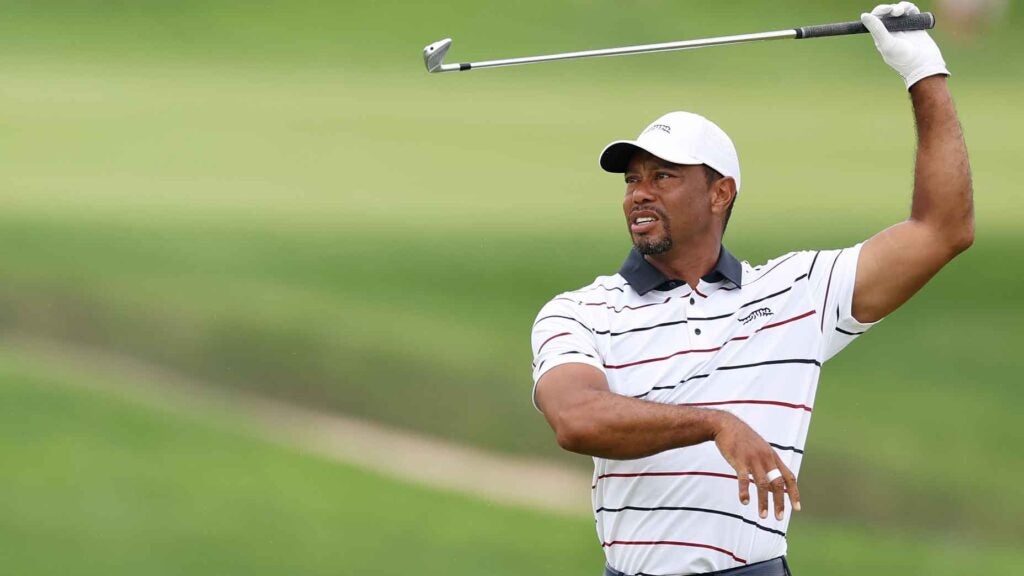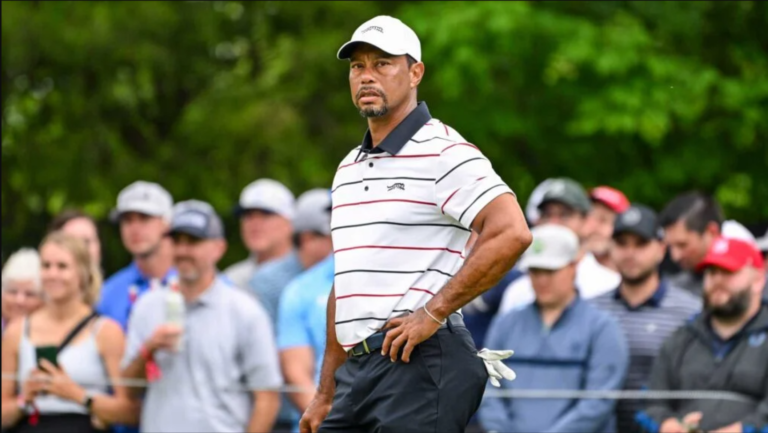The 15-time major champion’s time on leaderboards is coming to end, but he’s helping shape the game’s future
Tiger Woods has always played to win. Since turning professional in 1996, he has won 82 tournaments, including 15 major championships. Perhaps, more astonishing than the victories and majors is the 142-event made cut streak that lasted over a seven-year period from 1998 to 2005, when he was the most dominant golfer that the game has ever seen.
Woods never said he was the greatest. He didn’t need to. “There is no sense in going to a tournament if you don’t believe that you can win it,” he once said.
READ NEXT :Tiger Woods to enter further talks over 2025 Ryder Cup captaincy – after hinting he would NOT take the job while PGA-LIV merger talks drag on
Yet, coming into the PGA Championship at the Valhalla Golf Club in Louisville, Kentucky, Woods was circumspect about his chances of hoisting his fifth Wanamaker Trophy. Asked about the state of his game, he admitted that he was rusty and that the barrage of injuries had taken a toll on his body. “I can still hit shots,” he said on Tuesday. “It’s getting around is more of the difficulty that I face day-to-day and the recovery of pushing myself either in practice or in competition days.”

When the tournament began on Thursday, Woods, who was making his 23rd appearance in the PGA Championship, performed like the part-time player that he has become over the last several years. On his way to a 1-over par 72, the 48-year-old World Golf Hall of Famer hit a smattering of good shots but hardly kept pace in a first round that saw a record 64 players shoot under par scores.
“It’s just the competitive flow,” he said after the round. “It took me probably three holes to get back into competitive flow again and get a feel for hitting the ball out there in competition, adrenaline, temperatures, green speeds. These are all things that normally I adjust to very quickly, and it just took me a few holes to get into it.”

By Friday afternoon, the tournament had been temporarily upstaged by the early morning arrest of Scottie Scheffler, the game’s No. 1 ranked player, for allegedly disobeying a police officer’s order at the entrance to the Valhalla Golf Club. Looking invincible like the Woods of old, Scheffler settled down after the shock of being handcuffed and hauled off to jail to shoot a 5-under par 66 to go into the weekend with a chance to win his second major of the year after taking the Masters last month. As Scheffler went off to answer questions about spending time in a Louisville holding cell, Woods was starting his round and would need a good one to avoid missing just his 15th cut in 93 major appearances.
JUST IN :At 15, Tiger Woods’ Son, Charlie, Looks To Carve His Own Legacy Despite U.S Open Qualifier Loss
Starting his second round two shots off the projected cut of 1 under par, Woods went seven over par in his first four holes to guarantee that he would miss the cut. It’s hard to imagine a worst scenario for a player already battling competitive rust and old age in a game dominated by much younger players. Here he was looking ahead to the next tournament, the next opportunity to show that he could still play at next month’s U.S. Open at Pinehurst, but stuck for five hours on a golf course where he had solidified his legend 24 years earlier in an epic duel with Bob May at the 2000 PGA Championship.

Back then when Woods was in the morning of his career, he turned the Jack Nicklaus-designed Valhalla Golf Club into a theater with a two-act play and May as his benevolent antagonist. In the final round in 2000, they matched each other shot for shot, creating a drama unprecedented in televised golf history. Then in the three-hole aggregate playoff, Woods survived to win by one stroke. That victory at Valhalla was the third leg of the Tiger Slam, which climaxed when Woods won the 2001 Masters.
